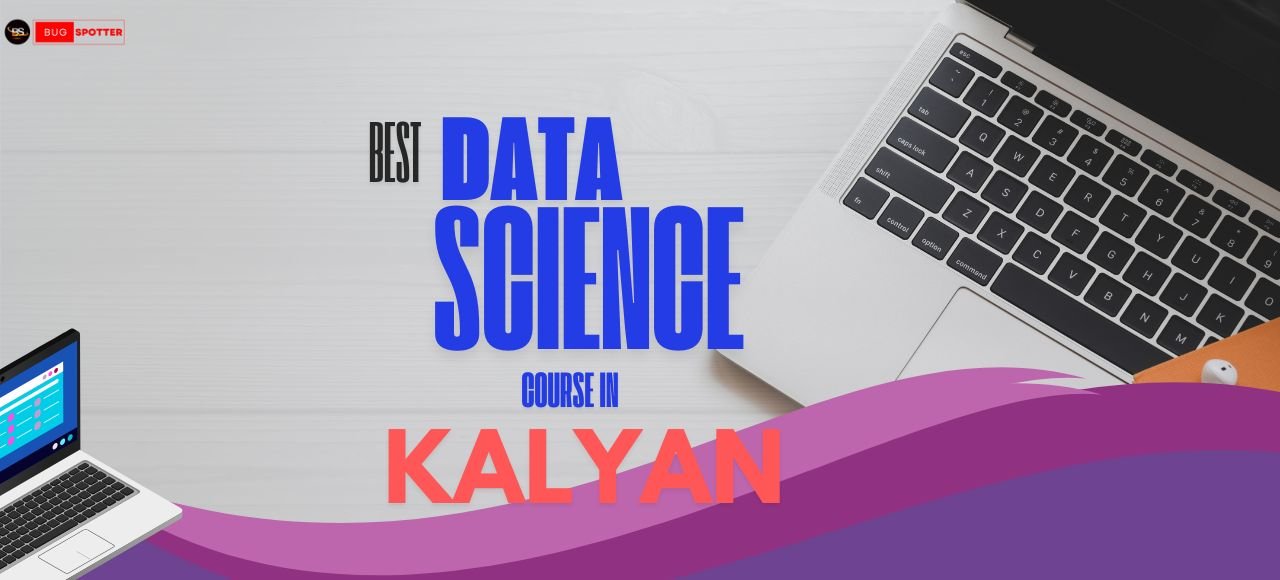Best Data Science Course In Kalyan With Placement
100% Placement Assistance | Live Online Sessions
Data Science course : 4 Month Personalized Live Advance Data Science Training is taught by industry experts in a comprehensive & question-oriented format.
Enroll Before: 07 December, 2024
1000+
Students Trained
100%
Placement Assistance
07 December 2024
Start Date
0%
EMI Available
7:30 AM - 9:30 AM
Lecture Timings ( IST )
Key Highlights Of The Advance Data Science Course
- 100+ Hours Of Live Class
- 50+ Hours of Videos
- 1-on-1 Mentoring Sessions
- 20+ Industry Tools Mastery
- In-Class Live Presentations
- 3+ Live Projects & Practice Assignments
- 100% Placement Assistance
- Resume & Interview Training
Get familiar with our online Python Data Science course syllabus.
Syllabus for Data Science Course
Online Advance Data Science Course in Pune is designed to teach students the basics to the advanced level concepts of Python Data Science with practice assignments and offline in-class projects which helps them to get placed in MNC’s.
Term 1
In this term, you will learn how to ace Python Basics, Python OOPS and Python Libraries like Pandas, Matplotlib, Numpy, etc…
Python Basics :
- Why python
- Python IDE
- Basics of programming
- Variables , Data Types
- Conditional statements
- Loops
- Logical Thinking
- Data Structures
- Functions and types of arguments
- Lambda Functions
- memory Management
- garbage collector
- Copies - shallow copy, deep copy
- Higher Order Functions - Map , Reduce , Filter
- Iterable , Iterator , generator
- Exception handling
- Programming interview questions
Python OOPS :
- Class
- constructor and its types , Destructor
- Types of variables - instance , static
- Inheritance - Single , Multiple , Multilevel , Hierarchical
- polymorphism
- duck typing
- Overloading - method , Operator , constructor
- overriding - method , Constructor
- Super Function
- Encapsulation
- access Modifiers
- Abstraction
- monkey patching
Pandas :
- Introduction to Pandas
Series Data Structure - Data Frame Data Structure
- Merging DataFrame
- Read Complex CSV , JSON , excel Files using pandas
- Write to File
- Data Frame Manipulation - head , Tail , Describe , shape ,Drop , inplace
- loc & I=iloc
- Apply Function
- Value count
- Add Column
- Add Row To DataFrame - using concat,Append
- Order By Operation
- Sort Values
- Group by operation
- Pivot Table
- Date/ Time Functionality
- Example Manipulating DataFrame
Matplotlib :
- line graph
- bar Plot
- scatter plot
- pie chart
- other function
Numpy :
- Introduction to Numpy
- Creating Arrays , Indexing , Slicing
- Data Types
- Copy vs View
- Array Shape & Reshape
- Arrays Split & Joins
- Arrays Filter
- Seaborn Model
Data Engineering in Python :
- Handling Missing Data
- Techniques to inpute missing Values
- Meaningful Data transformation
- Encoding Data
Data Visualization in Python - Read Json , CSV's, excels
Term 2
In this term, you will learn how to ace MySQL, AWS, Tools & IDE’S
MYSQL :
- DBMS & RDBMS
- Data Types
- DQL
- DDL
- DML
- TCL
- DCL
- Key Constraints
- Operators
- Clouses
- Aggregate Functions
- Indexes
- Views
- Triggers
- JOINS
- Sub Queries & Nested Queries
- Use of AWS
- Cloud computing models
- S3
- AWS Data Pipeline
- EMR
- AWS Glue
- Athena
- Redshift
Azure devops :
- Use Of Devops
- CI/ CD Pipeline
- work item
- sprints
- repository
- state of task
- Repose Clone
- pull request
Git :
- Use of Git
- feature branch
- clone
- Add
- Commit
- Push
IDE :
- PowerBI :
- Dashboards
- Application
- DBeaver :
- Connection Process
- DB Manipulation
- Jupyter Notebook :
- Google Colaboratory
- Pycharm
Term 3
In this term, you will learn how to ace Framework and industry projects
Pyspark :
- Use of Pyspark For Data Science
- Spark Session & RDD
- Timestamp
- Schema
- Parallelize
- Broadcast Variable
- Create DataFrame
- Transformations & actions
- Empty DataFrame
- Structure type and structure field
- Select
- Collect
- WithColumn
- Where & Filter
- Drop & Drop Duplicate
- orderby and sortby
- Groupby
- Joins
- union and union all
- union byname
- map , flatmap
- Sample by vs Sample
- Pivote
- maptype
- Aggregate Functions
- Windows Function
- Read and Write in CSV
- When
- Split
- collect
- Row number
- dense rank
1) E-Commerce
2) Banking Domain

The Career Opportunities After Completing a Data Science Course in Kalyan
Data Engineer: Building and maintaining data pipelines, and working with data storage solutions and tools such as AWS Glue, Redshift, and MySQL.
Quantitative Analyst: Applying quantitative techniques to financial and business data, leveraging Python for data manipulation and analysis.
Data Analyst: Performing data analysis and visualization using tools like Pandas, Matplotlib, and PowerBI, and creating actionable insights from data.
Cloud Data Engineer: Working with cloud services and data pipelines, including AWS services like S3, EMR, and Athena.
DevOps Engineer: Implementing CI/CD pipelines and managing version control with Git, focusing on automation and integration in data engineering projects.
Tools You’ll Master










The Importance of Data Science in Today's World
Data science is crucial in today’s world as it drives decision-making, innovation, and efficiency across industries. By analyzing vast amounts of data, organizations can uncover valuable insights, identify trends, and make informed predictions, leading to better strategies and outcomes. In sectors like healthcare, finance, marketing, and technology, data science is used to optimize processes, improve customer experiences, and develop new products or services. As data continues to grow exponentially, the ability to harness and interpret it effectively has become essential for competitive advantage, problem-solving, and shaping the future of businesses and society.
Mentors

Python Trainer
4+ Years ITExperience
4+ Years Teaching Experience

Project Trainer
5+ Years IT Experience
5+Teaching Experience

Digital Marketing
3+ Years IT Experience
2+Teaching Experience

Manual Trainer
5+ Years IT Experience
5+Teaching Experience
Our Learners Work At

























Enroll Now and get 5% Off On Course Fees
Bug Spotter Reviews
Introduction to Data Science
Data science is the art of extracting insights and knowledge from large sets of data, using techniques from statistics, mathematics, and computer science. It’s akin to a detective using clues (data) to solve a mystery, uncovering hidden patterns and trends to help businesses and organizations make better, data-driven decisions. With the growing volume of data generated in every industry, data science has become crucial in converting raw information into actionable intelligence.
Why Data Science Matters
In today’s digital world, we interact with data constantly—whether we’re shopping online, interacting on social media, or using a mobile app. Data science allows businesses and organizations to make sense of all this data, uncover valuable insights, and gain a competitive edge. By analyzing customer behavior, improving products, and predicting future trends, data science empowers organizations to make informed decisions that drive innovation and growth.
Key Components of Data Science
Data Collection: The first step in any data science project is gathering data from various sources. These might include sensors, social media, customer surveys, or public databases. The quality and variety of data are crucial in producing accurate and reliable insights.
Data Cleaning: Raw data is often messy—containing errors, duplicates, or irrelevant information. Data cleaning involves correcting mistakes, removing unnecessary data, and formatting data for further analysis. This step ensures that the insights drawn are based on accurate and reliable information.
Data Analysis: Once the data is cleaned, it’s time to analyze it. This involves identifying trends, patterns, and relationships within the data. Techniques such as statistical analysis, clustering, and correlation analysis are used to uncover meaningful insights that can help answer business questions or solve problems.
Data Modeling: This involves using algorithms and machine learning models to predict future trends or classify data into categories. Predictive modeling and machine learning techniques are used to make data-driven forecasts or identify anomalies in large datasets.
Interpretation: The final step is interpreting the findings and communicating them in a way that decision-makers can understand and act on. This could involve creating visualizations, writing reports, or presenting findings in meetings.
The Process of Data Science
Data science follows a structured, iterative process:
Problem Definition: Start with a clear understanding of the business problem or question that needs to be solved (e.g., predicting customer churn, improving product recommendations, etc.).
Data Collection: Gather data from relevant sources. The quality and relevance of data are key to success.
Data Cleaning & Preparation: Preprocess the data by removing inconsistencies, correcting errors, and transforming the data into a usable format.
Data Analysis & Exploration: Apply statistical methods and machine learning algorithms to explore the data and uncover insights.
Modeling & Evaluation: Build predictive models or classification systems. Test their effectiveness and refine them based on results.
Interpretation & Communication: Present the findings in a clear, actionable way. This could involve data visualizations or reports that make complex insights understandable for decision-makers.
How Data Science Projects Are Structured
A data science project typically follows these stages:
Define the Problem: Begin with a clearly defined problem statement or goal (e.g., “How can we predict next quarter’s sales?”).
Data Collection & Preparation: Gather data from internal databases, external sources, or sensors. Clean the data to ensure quality.
Exploratory Data Analysis (EDA): Conduct preliminary analysis to understand the structure of the data, identify patterns, and check for anomalies.
Model Building: Select and train appropriate models (e.g., regression, decision trees, or neural networks).
Evaluation: Test models for accuracy and fine-tune them to improve performance.
Communication: Summarize findings, present recommendations, and create visualizations to communicate results effectively.
The Role of a Data Scientist
A data scientist is a professional who uses their expertise in statistics, computer science, and business to analyze large amounts of data and uncover insights that inform decision-making. They are problem solvers who use a combination of programming, statistical analysis, and machine learning to create models and algorithms that predict future trends, solve complex problems, or optimize processes.
Key Responsibilities of Data Scientists
Data Gathering & Analysis: Collecting, cleaning, and exploring data to identify patterns, trends, and insights.
Modeling & Prediction: Building statistical models or machine learning algorithms to make predictions or classify data.
Communication: Translating complex findings into clear, actionable insights for business stakeholders. This could involve creating dashboards, reports, or visualizations.
Collaboration: Working closely with teams from engineering, marketing, and product development to understand business challenges and provide data-driven solutions.
Applications of Data Science
Healthcare: Data science is used to predict disease outbreaks, personalize treatments, and improve patient outcomes. Machine learning algorithms can analyze medical data, imaging, and patient histories to assist in diagnosis and treatment plans.
E-commerce: By analyzing shopping habits, customer reviews, and inventory data, businesses can recommend products to users, forecast trends, and improve customer experiences.
Finance: Data science helps detect fraud, predict market movements, manage risks, and assist with investment decisions by analyzing financial data, transactions, and market trends.
Marketing & Advertising: Data science enables businesses to segment customers, personalize ads, optimize pricing, and measure the effectiveness of campaigns using predictive analytics.
How to Get Started in Data Science
Courses for Beginners: Many online platforms like Coursera, edX, and Udemy offer introductory courses in data science, covering topics like statistics, Python programming, and machine learning. Some popular options include the “IBM Data Science Professional Certificate” or “Google Data Analytics Professional Certificate.”
Hands-on Practice: Start working with real-world datasets. Websites like Kaggle provide a platform for practicing data science by working on actual challenges, learning from other data scientists, and improving your skills.
Learn Key Tools & Techniques:
- Programming: Learn Python or R, two of the most commonly used programming languages in data science.
- Data Visualization: Get familiar with tools like Tableau, Power BI, or Python libraries (Matplotlib, Seaborn) to create insightful charts and visualizations.
- Machine Learning: Explore algorithms like decision trees, clustering, regression, and neural networks.
Build a Portfolio: Document your projects and share them on GitHub or personal blogs. A well-structured portfolio showcasing your work is essential for attracting potential employers.
Join Data Science Communities: Join forums like Stack Overflow, Reddit’s r/datascience, or LinkedIn groups to ask questions, share knowledge, and stay updated on the latest trends and tools.

Eligibility
for Data Science Course
1. Any Graduate Background
- You can come from any educational background—whether you’re an engineer, from commerce, humanities, or any other field. A degree is the only basic requirement.
2. Interest in Coding
- While prior coding experience isn’t mandatory, having a basic interest in coding will help. During the course, you’ll learn programming languages like Python, R, and SQL. Don’t worry if you don’t know coding yet—these skills can be picked up as you go!
3. Time Commitment
- A minimum of 3-4 hours per day is required to complete the course, which includes time for lectures, assignments, and practical exercises. Consistency and commitment are key to your success.
4. No Prior Experience Required
- No prior data science experience is required. The course is designed to take you from beginner-level concepts all the way to advanced topics, so you can start from scratch and still succeed.
5. Curiosity & Problem-Solving Mindset
- If you have a curious mind and enjoy solving problems, you’re already on the right path. Data Science is about exploring data and finding solutions to real-world problems, and this mindset will help you excel.
FAQs
Frequently asked questions
1. What is a Data Science Course, and Why Should I Consider It?
A Data Science course teaches you how to gather, clean, analyze, and interpret large amounts of data to find meaningful insights. In today’s world, businesses and organizations rely on data to make decisions in areas like healthcare, finance, e-commerce, and more. Taking a data science course can help you learn how to use data to solve real-world problems and improve decision-making.
2. Who is Eligible for a Data Science Course?
Anyone can take a Data Science course, but it’s especially useful for people with a background in fields like mathematics, computer science, or related subjects. That said, many courses are designed for beginners with no prior experience in programming or data analysis. Whether you’re new to the field or looking to switch careers, a Data Science course can be a great starting point.
3. What Skills Will I Learn in a Data Science Course?
In a Data Science course, you’ll learn a variety of important skills, including:
- Programming: Using languages like Python, R, and SQL.
- Data Cleaning: How to fix and organize messy data.
- Data Visualization: Creating charts and graphs using tools like Tableau, Matplotlib, or Seaborn.
- Statistical Analysis: Understanding data trends and performing tests to make decisions.
- Machine Learning: Using algorithms to predict outcomes and classify data.
- Big Data Tools: Working with technologies like Hadoop and Spark to handle large datasets.
Some courses also teach about data engineering (building systems to process data) and deep learning (a type of advanced machine learning).
4. How Long Does it Take to Complete a Data Science Course?
The duration depends on the course type:
- Short bootcamps or workshops can last a few weeks to a couple of months.
- Comprehensive certification programs can take several months.
- Self-paced online courses may take longer, depending on how much time you can dedicate to learning.
5. Is a Data Science Course Difficult for Beginners?
Data Science can be complex, but many courses are designed to be beginner-friendly. They start with the basics—like basic statistics, programming, and data visualization—and gradually move into more advanced topics like machine learning. With consistent practice and learning, beginners can succeed.
6. What are the Career Opportunities After Completing a Data Science Course?
Data Science is in high demand, and there are many job opportunities, such as:
- Data Analyst: Analyzing data to provide insights.
- Data Scientist: Using data to build models and make predictions.
- Machine Learning Engineer: Building systems that learn from data.
- Business Intelligence Analyst: Helping businesses make decisions based on data.
- Data Engineer: Creating infrastructure to manage large datasets.
These roles offer good pay and career growth potential.
7. Are There Any Prerequisites for Joining a Data Science Course?
Some courses may require a basic understanding of mathematics (like statistics or linear algebra) and programming. However, there are also many beginner courses that don’t require any prior knowledge, so you can start from scratch if you’re new to the field.
8. Will I Learn Machine Learning in a Data Science Course?
Yes, machine learning is an important part of most Data Science courses. You’ll learn how to use algorithms to make predictions, classify data, and find patterns. Topics like supervised learning, unsupervised learning, and deep learning are usually covered in advanced sections of the course.
9. How is a Data Science Course Different from a Data Analytics Course?
Both fields involve working with data, but they are different:
- Data Science is broader—it includes data analysis, but also programming, machine learning, and predictive modeling.
- Data Analytics focuses more on interpreting existing data to make business decisions, without as much emphasis on creating models or predictions.
In short, Data Science is more about using algorithms and programming to explore and predict future trends, while Data Analytics is about analyzing current data to understand what’s happening.
10. Can I Take a Data Science Course Online?
Yes, you can find many online Data Science courses. These courses are offered by platforms like Coursera, edX, and Udemy, as well as universities. Online learning gives you flexibility, so you can study at your own pace from anywhere.
11. What is the Fee for a Data Science Course in Kalyan?
The fee for a Data Science course can vary. For example, at Bug Spotter Software Training Institute in Mumbai, the fee is ₹30,000. Prices can differ based on the institution, course duration, and specialization. It’s a good idea to compare different options to find a course that fits your budget and learning goals.
Data Engineer
Roles and Responsibility for Data Engineer
Roles and Responsibility for Data Engineer
A Data Engineer typically has the following key responsibilities:
- Designing and building scalable, reliable data pipelines to ingest, transform, and load data from multiple sources.
- Implementing data storage solutions (e.g., data warehouses, data lakes, NoSQL databases) for reporting, analytics, and business intelligence.
- Developing data transformation logic to clean, enrich, and normalize data, ensuring high-quality information.
- Collaborating with data analysts and business stakeholders to understand data requirements and design effective data models.
- Ensuring data quality, security, and compliance through monitoring, alerting, and continuous improvement.
- Deploying and maintaining data engineering solutions, including pipelines, data stores, and infrastructure.
- Sharing knowledge and best practices with the data engineering community.
Course Duration
Data Science in 3 Months?
Can I Learn Data Science in 3 Months?
Yes, it’s possible to learn Data Science in 3 months, but it requires a high level of dedication and consistency. You’ll need to spend at least 3-4 hours a day studying and practicing concepts like Machine Learning, Data Analysis, Statistics, and Data Visualization. Focus on not just watching lectures but also doing hands-on exercises and working through real-world projects to reinforce your learning.
Completing multiple projects is crucial for building a strong portfolio, which will help you stand out when applying for jobs. Consistency, focus, and commitment to your study schedule are key to mastering Data Science in a short time frame. By the end of 3 months, you’ll have a solid understanding of core concepts and practical experience that can help you land a job in the field.
With the right mindset and effort, you can definitely get job-ready in just 3 months.


